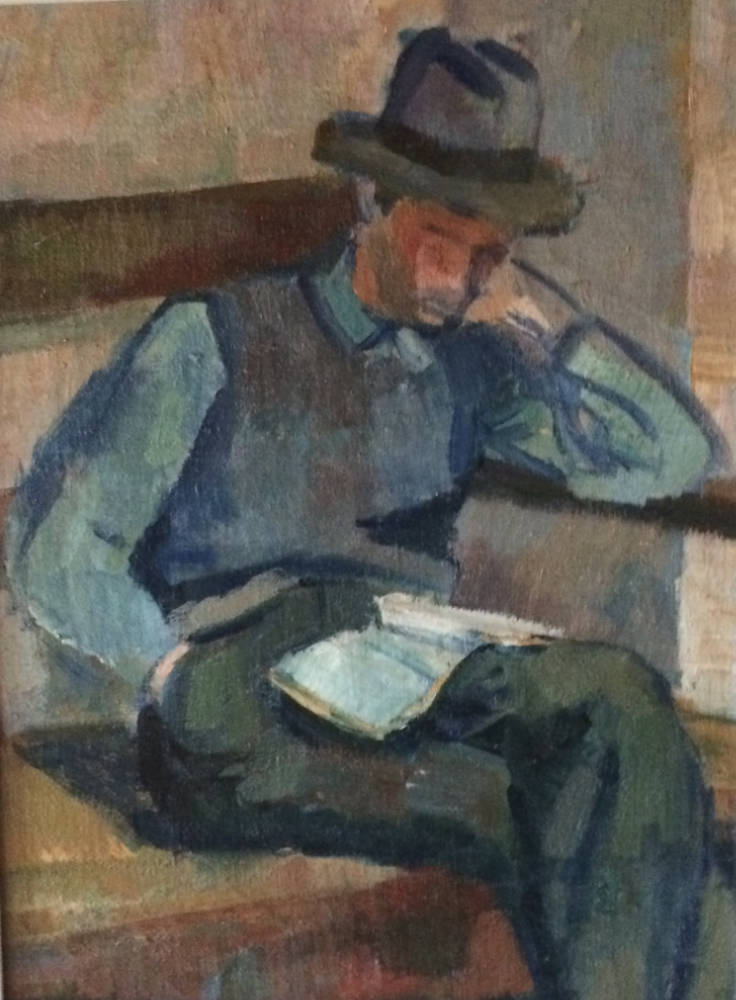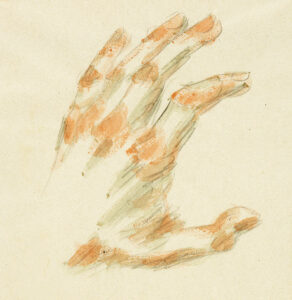It's all about the artwork
the documentation process
Every piece of information entered into the catalogue’s database is related to a specific work of art. This includes its characteristics (title, medium, date, dimensions…) as well as information on its current location, provenance, exhibition history, published references, research notes, and more.
ONLINE PLATFORM
The online research platform facilitates the entry and organization of required data around the artwork. The Marchutz catalogue raisonné is powered by panOpticon, a cloud-based information management system, using the Uniform Data Standards recommended by leading members of the Catalogue Raisonné Scholars Association. The panOpticon platform hosts the catalogues raisonnés of over 90 artists, including Paul Cézanne (discover Paul Cézanne’s Catalogue Raisonné), Mary Cassatt, Roy Lichtenstein, Sam Francis and John Singer Sargent.
“One of the many challenges of a catalogue raisonné, is staying focused. When I feel I’m getting dispersed, I repeat to myself my new mantra: It’s all about the artwork.
Denise Lemoine
Project Manager, The Leo Marchutz Catalogue Raisonné
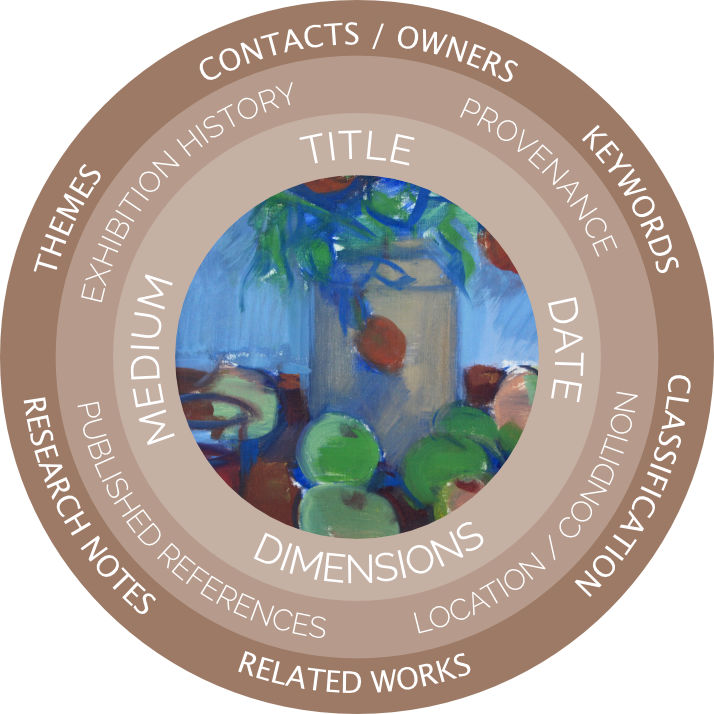
Denise Lemoine
Project Manager, The Leo Marchutz Catalogue Raisonné
Project Highlights
ARTWORK CATALOGED
1,077 works recorded
(360 paintings, 266 drawings and 451 lithographs)
MUSEUM FINDINGS
950 individual works found
in 18 museums
PHOTO SHOOTS
258 large-format paintings.
462 lithographs.
29 motifs “Streets of Aix”.
9 works at the Saint Marc Jaumegarde Chapel.
6 FUNDRAISING CAMPAIGNS
295 donors
$65,256 collected
FOLLOWERS
450+ newsletter subscribers
A Never-ending Story: The example of Cezanne's Catalogue Raisonné - 115 Years in the Making
The complete online catalogue raisonné of Paul Cézanne went live on January 19th, 2019. But one could say that the story of its making began more than a century earlier, in 1904. Here is a short version of a story that puts into perspective the ongoing process of a catalogue raisonné.
Pommes et biscuits, Paul Cézanne, 1879-1880.
(Musée de l’Orangerie, Paris)
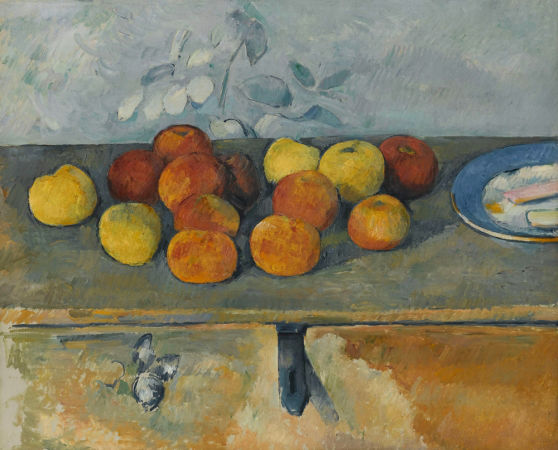
Pommes et biscuits, Paul Cézanne, 1879-1880.
(Musée de l’Orangerie, Paris)
Lost and found
The mysteries of the catalogue raisonne
Catalogue raisonné research is like detective work. You have to dig, follow leads, gather evidence, compare notes, and build your case. You have to be methodical… and above all, patient.
A catalogue raisonné is “a comprehensive, annotated listing of all the known works of an artist either in a particular medium or all media”. Sound simple? Well, think again! Like most artists, Leo Marchutz did not keep detailed notes on the artwork he created, exhibited, sold, donated or destroyed. Since research began, we have made some exciting discoveries in a number of museums around the world. We also encountered a fair share of mysteries. Below is a sample of what we found (or didn’t…)
Leo Marchutz in museums
950 works located in 18 institutions around the world
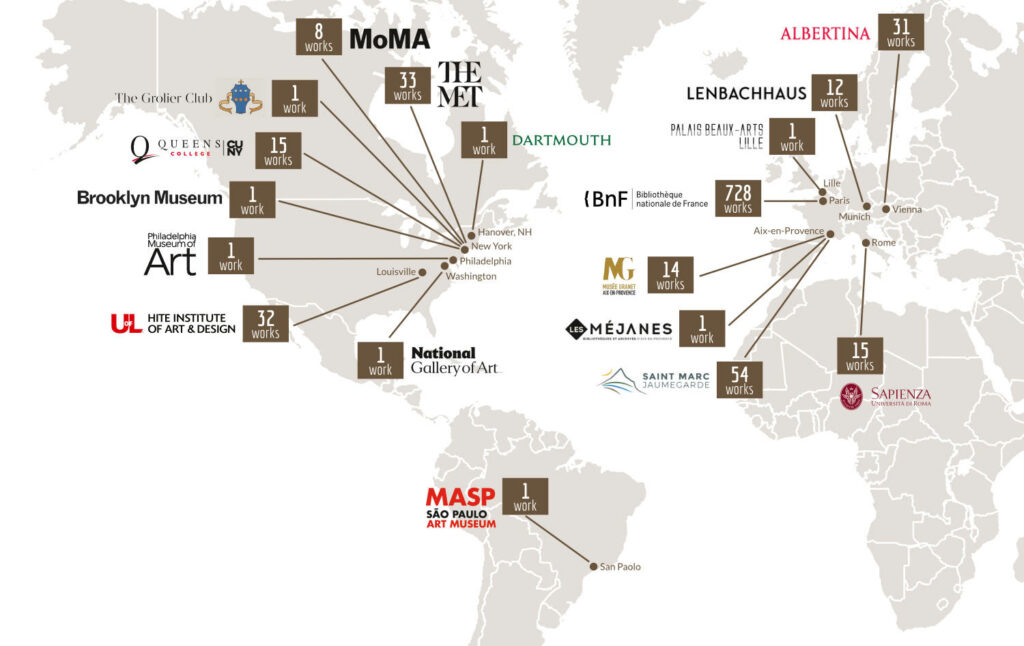
In the 1930s, Marchutz’s art began to travel the world with the help of John Rewald, who, acting as his agent, brought thirty of his works to London.
Over the following decades, collectors such as Henry Pearlman, James Rosenberg and his benefactor, French architect Fernand Pouillon, continued to promote Marchutz’s artwork around the world. Since 2019, the Léo Marchutz catalogue raisonné project has located over 950 works, notably in museums in North America and in Europe.
“We are delighted to have Mr. Marchutz’s prints in the Museum’s collection. His strength lies in delicacy, in deft suggestion.
A. Hyatt Mayor
Curator of the Print Department of The Metropolitan Museum of New York (1959)
whereabouts unknown
30 early works
Brought to London by John Rewald, acting as Marchutz’s agent in the 1930’s
Remaining leads: The Victoria and Albert Museum. John Rewald’s family to determine which galleries, private collectors, and other museums may have been approached.
1 oil painting, The Ascension, (1919)
The first painting sold by Leo Marchutz to Theater and Film Director Max Reinhardt.
Remaining leads: The heirs and relatives of Max Reinhardt in Germany and in the US.
97 artworks
Purchased by art collector Henry Pearlman between 1962 and 1969
Remaining leads: The Brooklyn Museum. The Henry Pearlman Papers at the Smithsonian Archives.
7 early period paintings (c. 1920)
The Apostles, The Annunciation, Christ on the Mount of Olives, The Resurrection, John at Patmos, Emmaus, Tobias Becoming Blind.
Remaining leads: The Folkwang and Osthaus Museums in Hagen and Essen, Germany. Other museums and galleries in Munster active in the 1920’s. The heirs and relatives of Ernst Osthaus, art collector and organizer of Marchutz’s first solo show.
